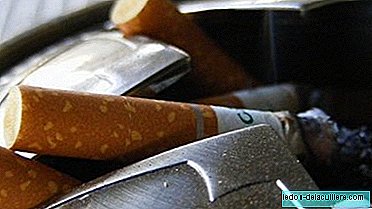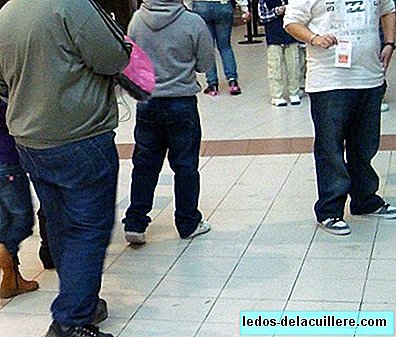
News like this is always a concern among pediatricians.
And according to a study published by the prestigious magazine The Lancet, and echoed by the Spanish web Jano, passive smoking causes 165,000 deaths annually in children.
And note that this is not only subscribed by the magazine, of recognized prestige, but that the World Health Organization itself publishes this data on its website, as one of the most worrisome today.
Even so, it is convenient to clarify a series of aspects, very important to understand the study data and, above all, to draw the conclusions that help us to reverse this situation.
Data on the effect of passive smoking in children
The first thing to note is that the data refer to the year 2004, since this is the last year in which WHO has data with which to make such a global statistic.
The results state that 1% of deaths on the planet are due to passive smoking. It is a very serious statement, since we would be affirming that 165,000 children died as a result.
The key to this is that almost half of the men and one third of the female and child population are passively exposed to tobacco smoke more or less usual. The problem is that half of the deaths due to passive smoking occurred in women, with children in second place and men in third.
The majority of deaths occur in the poorest countries, associated with infectious diseases, whose effects are aggravated by the combination with the tobacco pool.
What conclusions can we draw from this study?
The data from the study refer to the year 2004. The most "daring" will protest saying that these data are outdated, and they may be right.
However, it is also possible that the gap causes data from later years to be worse than those presented, since many of the anti-smoking measures that are finally being applied in many countries are later to the year to which the data refers; so these could still be worse in years like 2005, 2006 or 2007, for example.
And even with these measures underway, it remains to be seen the real impact they have on our health and especially on that of our children, since as we all know these measures are not yet completely "complete": there are still many places where it is easy for the smoke to pass from the smoking area to the non-smoking area; or simply that those areas are not respected, as it happens even in hospitals, where unfortunately it is no surprise to discover smoking not only to staff members (exceptional cases and generally criticized by colleagues, fortunately) ... but to the patients themselves, in any hole or hiding place they can find inside the enclosure.
On the other hand, it is very important to note that, despite its lower exposure, Young children and mothers suffer much more from the consequences of passive smoking.
This data is so striking that it should rethink a lot of tobacco habits in parents who smoke at home: the State, regional, local governments, etc., can do much to improve the quality of life of all in general with smoking bans. in places where it may be harmful to others.
But if that attitude is not carried out in the houses themselves, then the damage will continue to occur, with the terrible consequences we see in the study.
What can we do to avoid passive smoking in children
The answer is clear ... do not smoke. Agree that it is drastic, but this post is an excellent opportunity to consider stopping doing so. After all, tobacco produces almost six million direct deaths a year, a brutal figure.
But we also see that, passively, it kills 1% of the world's population annually, affecting no less than 165,000 children.
In case of smoking, the recommendation is to avoid doing so in front of the children, and trying to go out to the inner courtyard or terrace, if possible.
But the best option is, of course, for the parents themselves and for their children, to stop doing it.
After all, isn't a father willing to do everything for his children?












